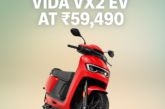
Electric Vehicles in India Market Report
Countries like China, America and Japan already running towards electric to control the petrol imports and pollution rates in the upcoming years. However, the second largest country in the world, India move towards electric vehicles is like 1 step forward and 2 steps back.
Electric Vehicles Movement in India
In 2013, the UPI government announced the National Electric Mobility Mission Plan (NEMMP) 2020 with a target of 6 to 7 million hybrid and electric vehicles in the market. But, only 25,000 hybrid and electric vehicles are launched in India during 2016-17, which is a huge setback.
In 2015, the NDA government announced FAME scheme to promote electric vehicles mobility. By 2030, 100% government vehicles and 30% of private vehicles should be switched over electric is one of the goals of FAME scheme.
The government of India has given the FAME scheme responsibilities to EESL company. Mahindra & Mahindra and Tata motors got the government electric vehicles tender.
Confusion in FAME II schemes
Electric vehicles are ready to launch in India, but what about the charging infrastructure?
Government taking lazy steps towards e-mobility policies, during the MOVE summit EV manufacturers expected that PM Narendra Modi will give a clarity about electric vehicles policy in India, whereas putting manufacturers in confusion government announced that new EV policy will be coming soon.
EV manufacturers are in dilemma after the unspecified news about FAME II, many EV manufacturers hold their electric vehicles launch as there is no clarity about the subsidies.
Even though the central government hasn’t announced any proper EV policy, state governments like Karnataka, Maharashtra, Telangana, Uttar Pradesh announced their EV policies to encourage eco-friendly transportation in India.
Example:
AVERA EV Manufacturer in Amaravati is all set to launch their Electric scooters in the market, but because of the FAME II announcement, they hold their launch.
The above example gives about the EV manufacturers challenges with government schemes, these unclear announcements put the manufacturers into problems.
Electric Vehicles Advantages for Indian Government
In India, almost 17 crores of two-wheelers run on roads. The average petrol utilization of these electric scooters is almost 3,400 crores per year. If all the two-wheelers are converted to electric, the government can save almost 1.20K Crores on petrol imports.
On the occasion of MOVE summit, PM Narendra Modi stresses the importance of electric two-wheelers and three-wheelers(erickshaw) public transport. The reason for slow transformation towards electric mobility is due to insufficient funds.
Colombia to export Lithium for India
The heart of electric vehicles is the battery pack, lithium-ion batteries are widely used in electric vehicles, Lithium element is abundantly available in Columbia and Chili, where Colombia is on a positive side to export Lithium to India which is a good sign.
EV Batteries Cost and Charging infrastructure are the main Challenges for the Indian government
Only hundreds of charging stations are available all around India. One of the reasons for the slow installation of EV charging stations infrastructure is the government laws. Only government can distribute power stations, so making the laws more convenient by making a private-government aided policy helps in boost up the charging stations infrastructure facilities.
Indian electric vehicles future depends on Batteries and charging infrastructure for sure, the battery will decide the electric vehicle price, the government should encourage battery manufacturers in India to reach the dream of electric mobility.
Two wheelers play a key role
At the end of 2016-17, 25,000 electric vehicles sold out, 92% of electric vehicles are two-wheelers, which plays a vital role in Indian EVs market. However, cars, buses, trucks should be switch into electric only then the petrol imports can be reduced as well as the pollution rates.
Final word on EVs in India
Indian people believe in “price first product next” policy. The government schemes, subsidies and incentives can benefit the EV manufacturers and public only at the initial stages, later on, no subsidies will be given. It’s the proper awareness created by the state and central government play the major role in transforming India into an electric mobility nation.







